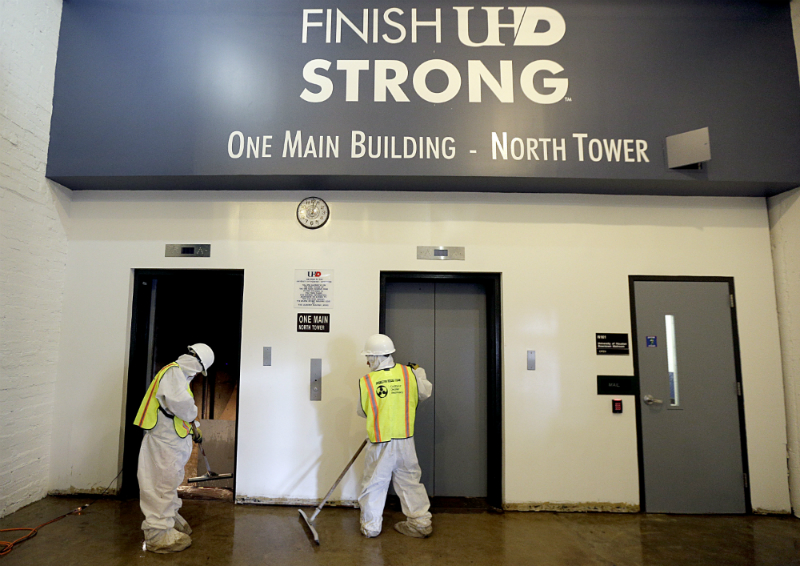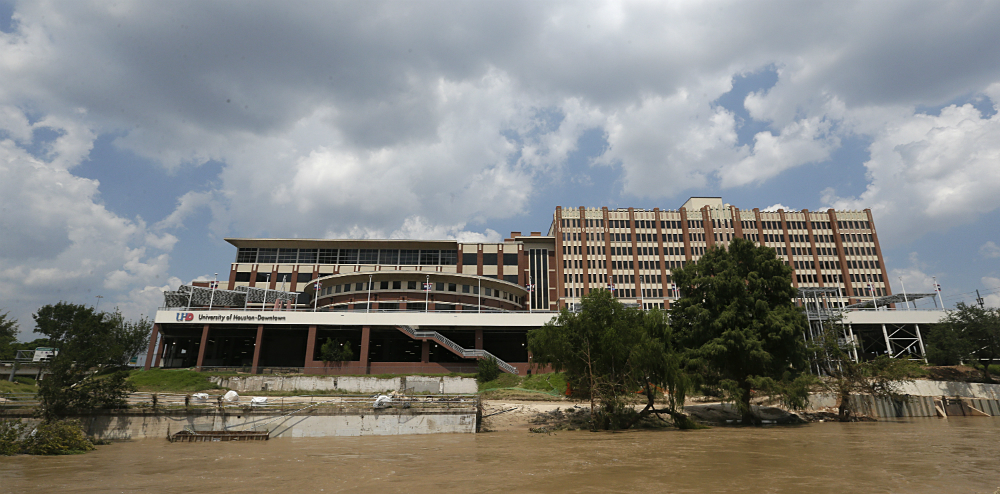The most important tools for emergency communication may not be what you think.
The 2018 Atlantic Hurricane Season began June 1, and our teams at the University of Houston-Downtown (UHD) have been looking at emergency communication quite differently this year. After Hurricane Harvey, UHD’s communications staff, emergency responders and leadership gained a renewed respect for inexpensive cloud-hosted communication and social media tools.
Like most institutions of higher education, UHD had all the appropriate plans in place last fall when weather reports started tracking Harvey in the Gulf of Mexico. Business continuity plans, emergency management plans, and communications plans were all precisely vetted and practiced across a span of years. Those plans were forced to change as Harvey transformed from major hurricane to the worst tropical storm ever to hit the Houston region.
As the storm approached, the university announced an early closure at 1 p.m. on Friday, August 24, and by Sunday afternoon, more than three feet of water had flooded the first floor of UHD’s historic One Main Building. Located at the intersection of flood-prone waterways White Oak and Buffalo Bayou, UHD’s main complex of buildings looked like an island.
By Monday, our primary and backup technology services were overwhelmed by the rising waters. Flooded freeways and surface streets blocked access to campus, preventing refueling of generators and exacerbating staffing challenges. The university was left with no power or water and intermittent access to email. Additionally, our website, learning management system, intranet and overall network connectivity were unavailable, making constituent communication a challenging proposition as waters rose.
Like most institutions, UHD uses a cloud-hosted emergency communications platform that supports text messaging, social media integration and email. However, with domain name and mail servers down, the tool was essentially diminished to a text messaging platform. The system could send messages to university email accounts, but our mail servers could not process them.
This could have caused an insurmountable communication gap during the most critical period of the disaster if it had not been for the reach and resiliency of social media.
Regardless of what kind of disaster strikes, the basics of any communicator’s toolkit include the institution’s website and email. With these critical tools down, and in the midst of a 500-year flood, our teams relied on text messaging, social media, and a simple blog to keep the university community informed. An inexpensive hosted blogging tool serves as the platform for UHD’s campus newsletter. When systems went offline, we used the blog to post details and texted links to stakeholders.
As little as ten years ago, a technology outage of this magnitude would have crippled communications. But times have changed, and our community of faculty, staff, and students was never without information during Harvey. In fact, the university facilitated more communication than most people – many of whom were dealing with dangerous flooding – could likely read.
An organization can choose to spend a lot of money building layers of technology redundancy to reduce risk. Alternatively, one can often achieve similar or better results by embracing and integrating the existing vast social media infrastructure into the overall disaster management and recovery plan.
UHD was closed for six and a half days. Each day, the Emergency Management Board met via conference call from disparate locations across Houston, and each day a Harvey Update article was posted on the blog, shared via text message and posted on Facebook and Twitter. Emails and website posts were also utilized, but since technology services were up and down, text messaging and social media served as the foundation for communication. In total, the university shared 13 operational messages, 13 news releases, nine text messages, and more than 50 messages on Facebook and Twitter.

UHD staff members cleaning up campus following Harvey. One Main Building incurred the most damage from the storm. Photo via Mike Emery of UHD.
By the final days of campus closure, technology systems were restored and the campus community rallied on Facebook to provide information and resources for those in need. A “Gator Family Check-in” page was established on Facebook. This particular page connected students needing assistance with peers and professors ready to assist.
A video of a student’s ceiling slowly caving in under the weight of water was noticed by two of his professors (a married couple). They immediately came to his aid and allowed him to live with them. The “Check-in” page also informed students about those in need. One student whose home was devastated received immediate assistance from classmates, who were alerted to her plight through this page.
Another resource was a “Harvey Information & Resources” website with information on area recovery agencies, donation sites, and institutional resources available to faculty, staff and students.
Relief funds also were established for students, faculty and staff. This fundraising effort was quickly communicated through the aforementioned platforms as rains still fell on Houston. More than $600,000 was raised to support students’ academic needs (replacing lost text books and school supplies). Some of these funds were contributed by other institutions of higher education from outside of the state.
As Harvey challenged Houston, it also challenged UHD in ways previously unimagined. The communication lessons we learned during Harvey can be applied to many kinds of campus emergencies, from weather-related incidents to security incidents.
Lessons Learned & Tips for Emergency Communication
- Recognize that social media, while often thought of as a platform for lighthearted platitudes, plays a major (and inexpensive, if not free) role in emergency communication in today’s world. A recent survey of UHD social media users indicated that the number one thing that constituents are interested in reading on social media is emergency communication.
- Have multiple contingency platforms ready to go, such as an alternate website hosted in the cloud and social media accounts.
- Cross train communication team members so that each pivotal person has a backup. You never know who will be available in an emergency, who will have power, internet or cell phone access.
- Arm communicators with “Go Kits” including instructions for infrequently used systems, emergency contact information for key staff members and administrators, a method for alerting media, MIFI devices, power bricks, and power inverters that offer alternate sources for internet and power.
- Practice, practice, practice. Role play different kinds of emergency scenarios with team members from across the organization and include both emergency responders and communications staff.
- Realize that without domain name servers, your domain name quite simply stops working, even if the underlying website is still available. Avoid making the address to your back up communications website part of your website URL (e.g. emergency.myuniversity.edu).
Elisa Crossland, Executive Director of University Relations; and, Hossein Shahrokhi, Associate Vice President for Information Technology and Chief Information Officer at UHD.













